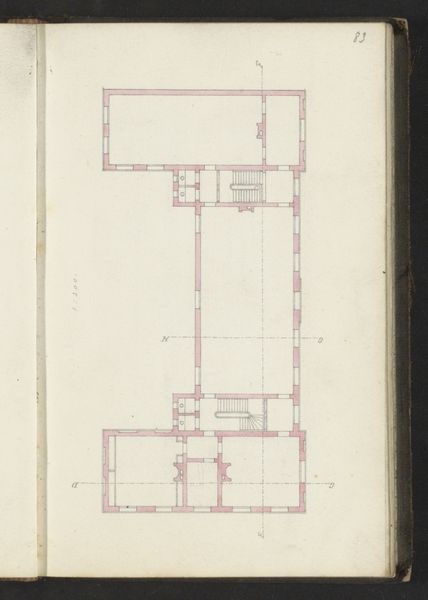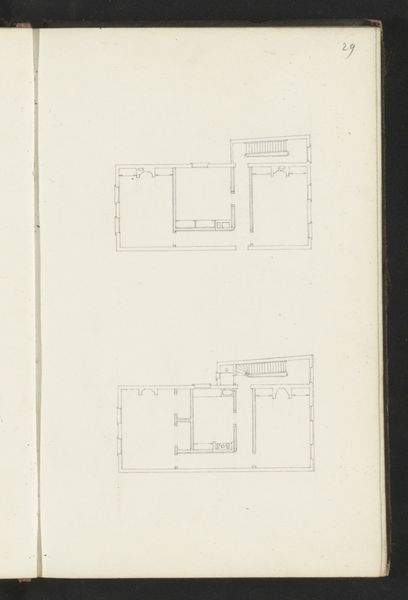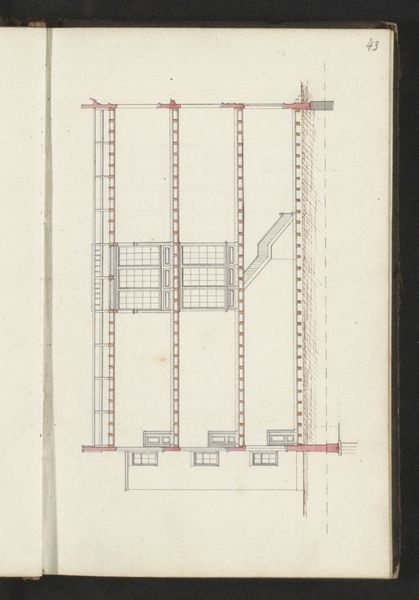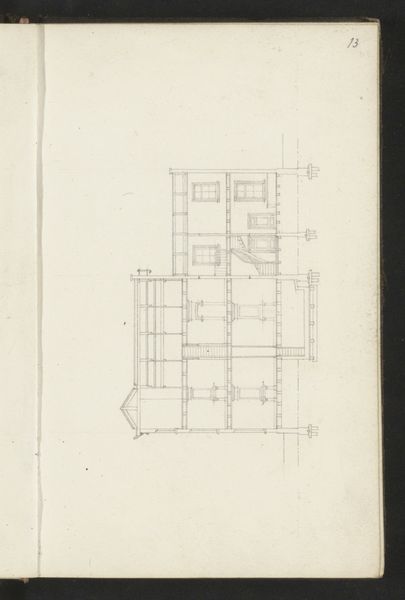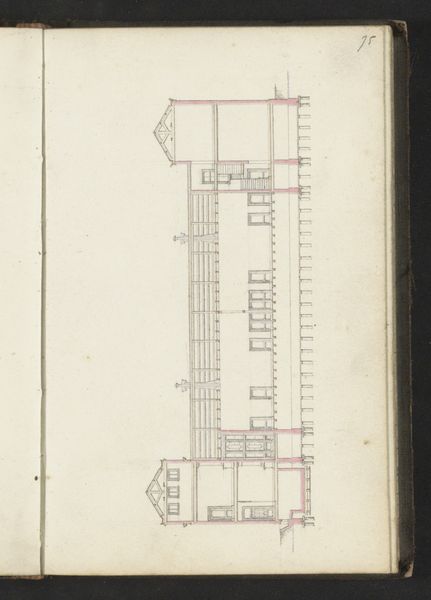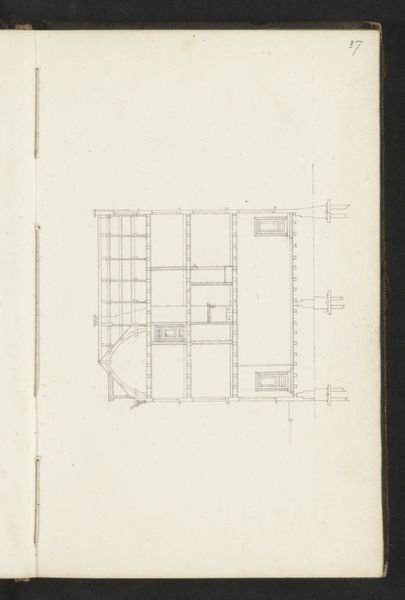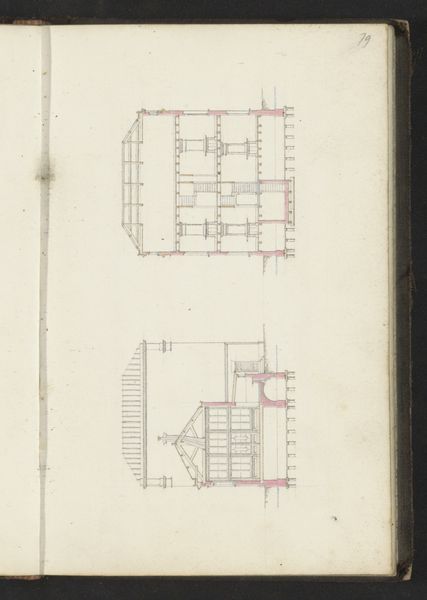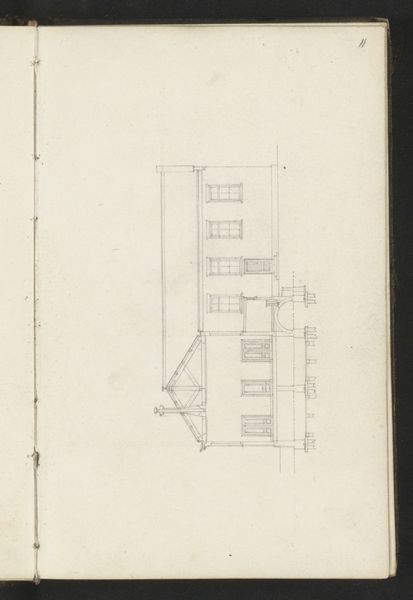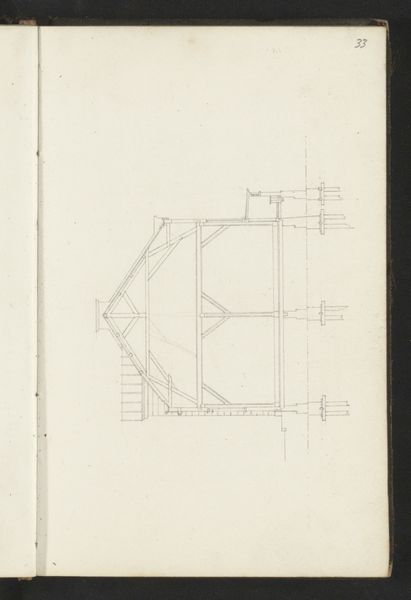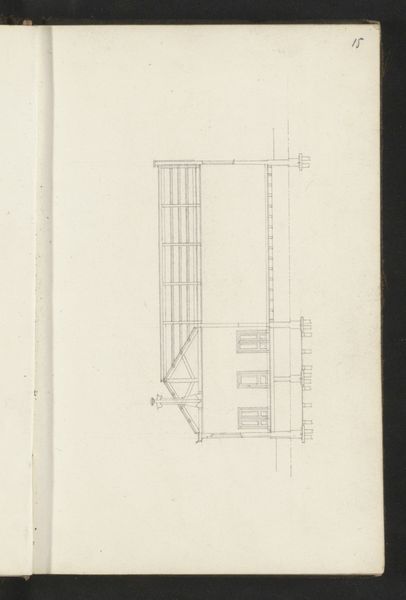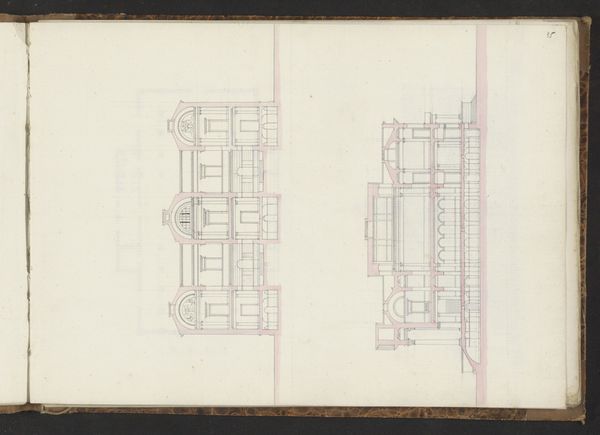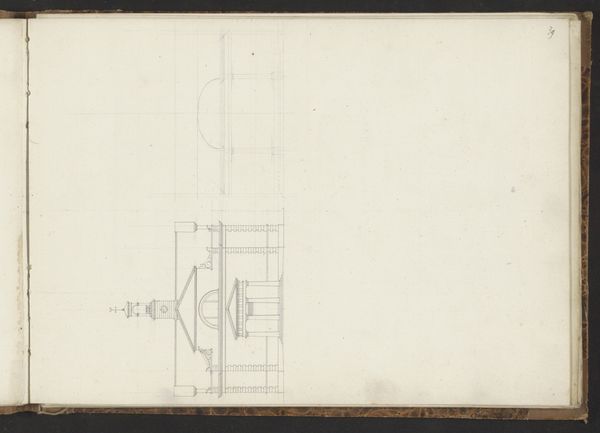
drawing, paper, pencil, architecture
#
drawing
#
paper
#
geometric
#
pencil
#
line
#
architecture
#
realism
Copyright: Rijks Museum: Open Domain
Curator: What a fascinating drawing! This is Willem Springer Jr.'s "Doorsnede van een gebouw over de breedte," or "Cross-section of a building across its width," created around 1864. It’s a detailed rendering in pencil on paper. Editor: Immediately, I'm struck by its stark, almost clinical quality. The precision of the lines, the carefully delineated planes… it feels very rational, very structured. Curator: It’s an architectural drawing, after all. But look beyond the strict geometry. Springer isn't just showing us the beams and arches. Consider, instead, how the architectural space itself becomes a container for cultural memory. Editor: I see the faint blush of pink accentuating some of the structural elements. It's subtle, almost like an afterthought. I’d be curious about the rationale behind the restrained chromatic code here. It doesn’t feel fully representational. Curator: Perhaps that gentle colour served as a cue, triggering emotional responses beyond mere functional design. It's a hint of the building's lived experience, wouldn’t you say? This hints at a Victorian fascination with the symbolic role of buildings, public and domestic, shaping a citizen's identity, values, and ideals through the architectural structures that house them. Editor: The lack of inhabitants is striking. This isn’t a portrait of lived-in space. We see form and line rather than function; it gives it an almost dreamlike, abstract character. Curator: Agreed. That absence invites projection, perhaps allowing viewers, both then and now, to populate it with their own histories and meanings. An architectural space only fully breathes and means through what’s lived within. This shows how symbols evolve across time and use. Editor: Yes, though perhaps that invites over-interpretation? To focus solely on what is signified is to neglect what exists formally – the texture of the line, the interplay of negative space, the relationship between volume and plane. Curator: An argument that speaks to a universal challenge when interpreting any historical artifact! Editor: Precisely. Studying how art represents the objective and material world yields as much understanding as the consideration of what the symbol represents to cultures across eras. Curator: Indeed, and thank you for making such a relevant contribution! Editor: Thank you! This dialogue reminds us that art, even in its most representational forms, offers multiple readings through different lenses.
Comments
No comments
Be the first to comment and join the conversation on the ultimate creative platform.
